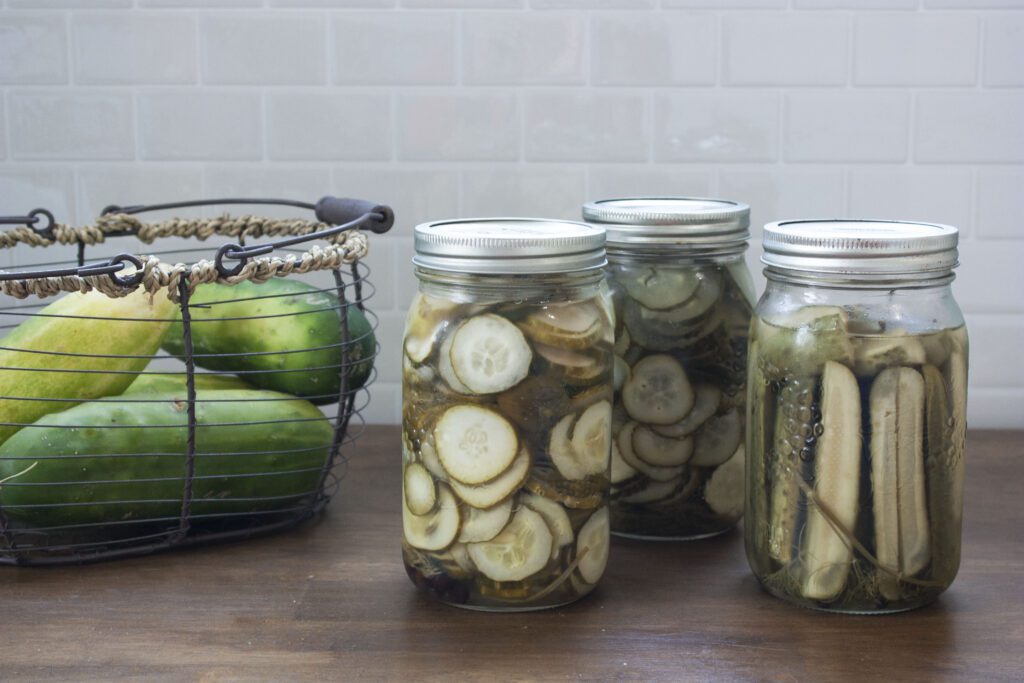Quick pickling is our favourite method for pickling food. Why? Because it’s quick!
This method works for more than just cucumbers/pickles but today’s recipe is all about the cucumber pickle.
The below recipe has been passed down by my grandmother and we are so excited to share it with the world. It is a small reminder of the woman she was. We love the idea that her pickles will travel to other homes and be enjoyed by so many. But before we get into the recipe.
What exactly is quick pickling?
Quick pickling is the same as refrigerator pickles. It is a method of pickling food that does not require water bathing or boiling jars. Fresh vegetables are placed in the jar and hot brine is poured over them. In this method, the jars do not need to seal, and they must be stored in the fridge as they are not shelf stable.
Why do we love this method so much?
• It’s quick
• It requires no fancy equipment
• No jars need to be boiled in water
• It’s super simple to do
How long do quick pickles last?
Traditional boiled/canned food can last on a shelf for years. But because this process doesn’t require the seal to be formed, this type of pickling doesn’t last as long. Also, the pickles must be refrigerated at all times so it is important to keep them in the fridge to last. From what we have seen online, many websites suggest that quick pickles will last a few months. In our experience with quick pickling, we pickle 12 jars of cucumbers, 1 for each month, to last us a full year until next pickling season. We have only had one instance where a jar fizzed upon opening that we had to throw out. However, we always do a smell test of the jars as they age to ensure they still smell fresh.
Why pickle?
The fun thing about learning to pickle is you can play with the ingredients, flavours and shapes. Depending on the size and variety of your cucumbers, you can pickle them whole, cut into wedges or sliced. The recipe that we will be sharing below has less vinegar than some other pickle recipes have so this is a milder pickle. But if you love a good tang, you can always switch up the brine and find one that you like.
Type of cucumber to use
We grow our own cucumbers to pickle, but you can find pickling cucumbers at the farmers market and in the grocery store in mid to late summer. Technically you can pickle any variety of cucumber, but the pickling varieties will give the best crunch. Non-pickling varieties, or overgrown pickling cucumbers can lead to mushy pickles. Our favourite pickling variety to grow is Chicago. We have grown it for multiple years and it has always reliably produced for us. This coming year we are going to trial the mini-cuke as well, as we have heard from some people that they harvest multiple cucumbers a day off the plant and they are perfect pickling size. We will be posting a cucumber grow guide soon, so stay tuned for that if you are hoping to grow your pickles from seed to sandwich.
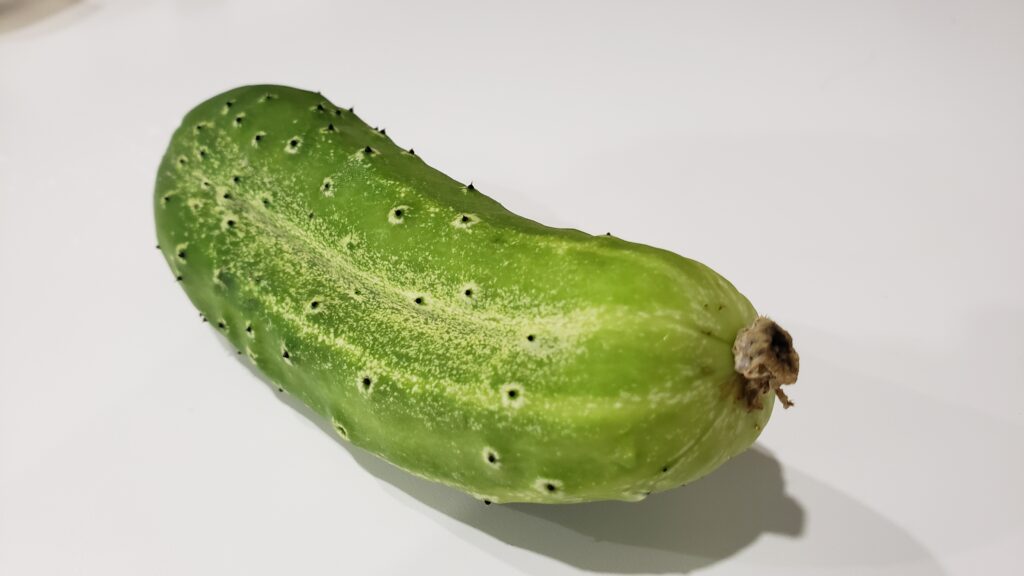
In addition to growing your own cucumbers, you can also grow your own dill for this recipe if you wish! You can use both the stalks of the dill plant, and even the flowers if your dill is in bloom.
Let’s get into it!
Get gardening advice directly to your inbox
Here is the equipment needed to make your own quick pickles:
- Mason jars (wide mouth are the easiest to work with)
- You can use any size jar you wish, whatever makes the most sense for how you consume pickles. We use 1L Wide Mouth jars, and this recipe requires 4 jars of this size
- Mandolin*
- Knife
- Measuring cups & spoons
- A pot to boil water
- Labels and a marker
*the mandolin is only required if you wish to cut your cucumbers into sandwich style pickle slices. If you do use the mandolin be very careful as they are extremely sharp. We always use the safety handle on it, and if required, a safety glove.
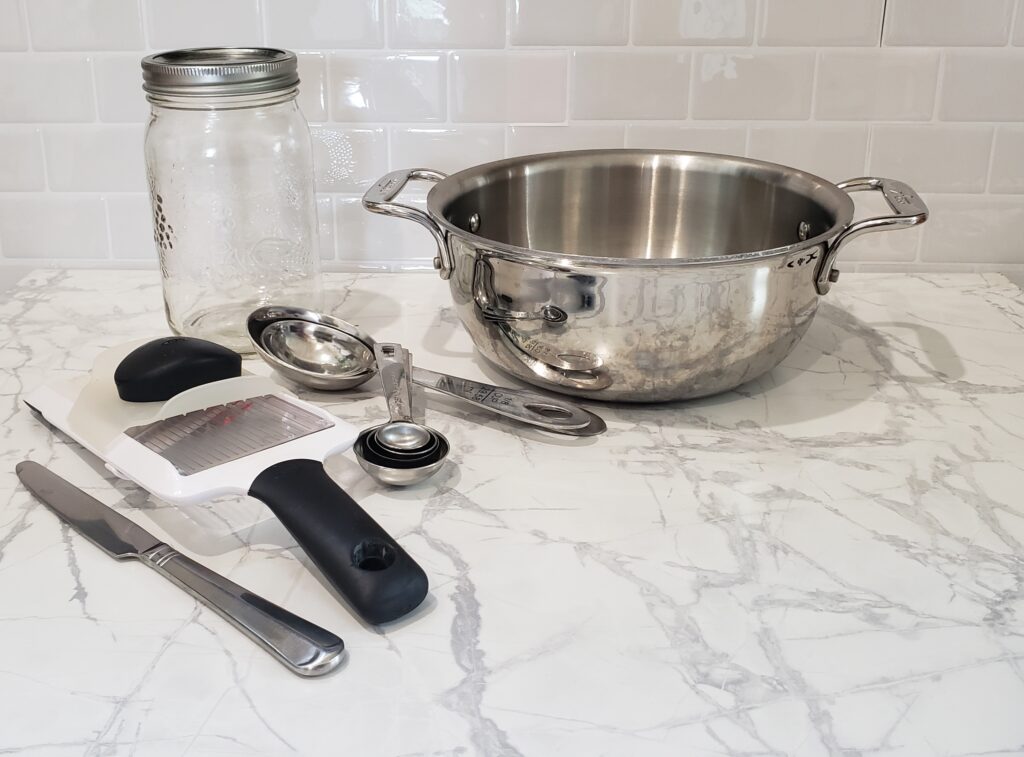
Here are the ingredients required to make these pickles:
• Cucumbers; whole, sliced or wedged
• Fresh dill stalks or flowers
• Whole allspice*
• Coarse salt
• Cream of tartar
• White vinegar
• Water
*whole allspice can be difficult to find at grocery stores. If you have an Indian supermarket nearby you are likely to find it there, otherwise it will be online (but often is more expensive online)
The allspice really shows its flavour in this recipe, so you’ll want to make sure you enjoy the flavour of it. Also, the vinegar to water ratio is lower in this recipe so it has a milder flavour, and is not as intense with the tart vinegar flavours.
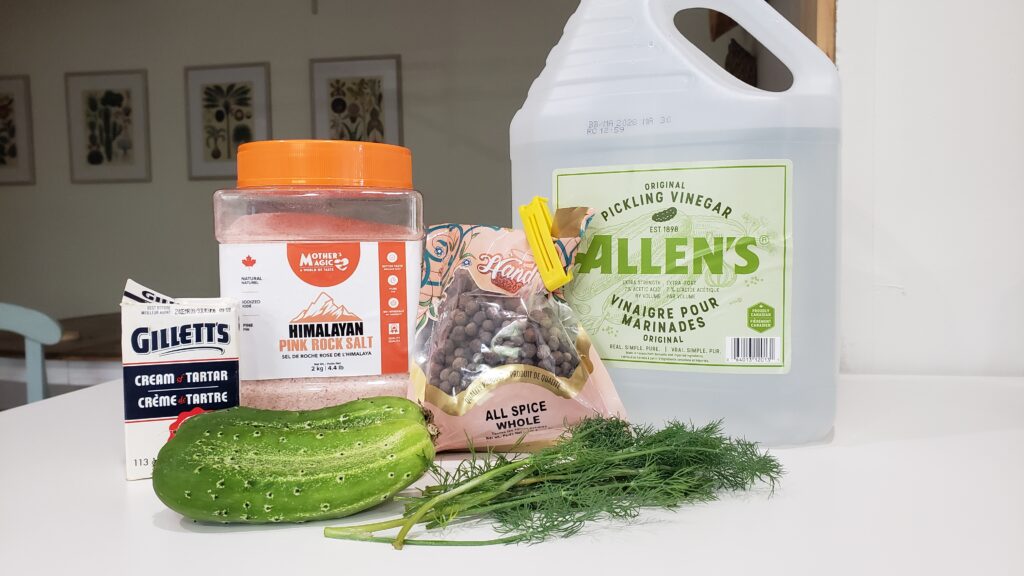
How to Make Quick Pickles: Step-by-Step
1. Clean the Jars
Make sure that the jars are freshly cleaned before using them. This recipe will use four 1L jars. Water bathing requires the jars to be boiled before hand but with the quick pickling method this isn’t required. Wash the jars in the dishwasher or you can wash them by hand in hot water.
2. Clean and Prep Cucumbers & Dill
For the Cucumbers
If you grow your own cucumbers, clean the sharp parts off the cucumber skin and cut the flower and vine tips off. If you are using farmers market or store-bought cucumbers, clean the cucumbers thoroughly. If possible, buying organic or spray free is best.
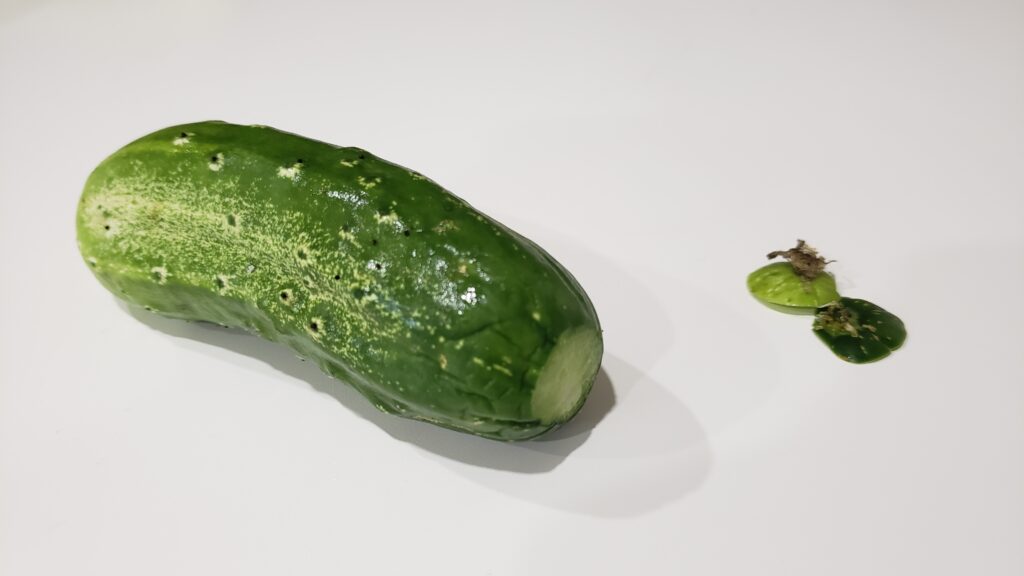
Cut the cucumbers in to desired shape, which could be whole cucumbers, wedges or slices. Cut the cucumbers as uniform as possible to ensure they pickle at the same rate. We recommend using a mandolin if you wish to cut in slices, on the thickest slice setting. If you use a mandolin, be very careful as mandolins are extremely sharp. Use the safety handle or a safety glove when slicing the cucumbers.
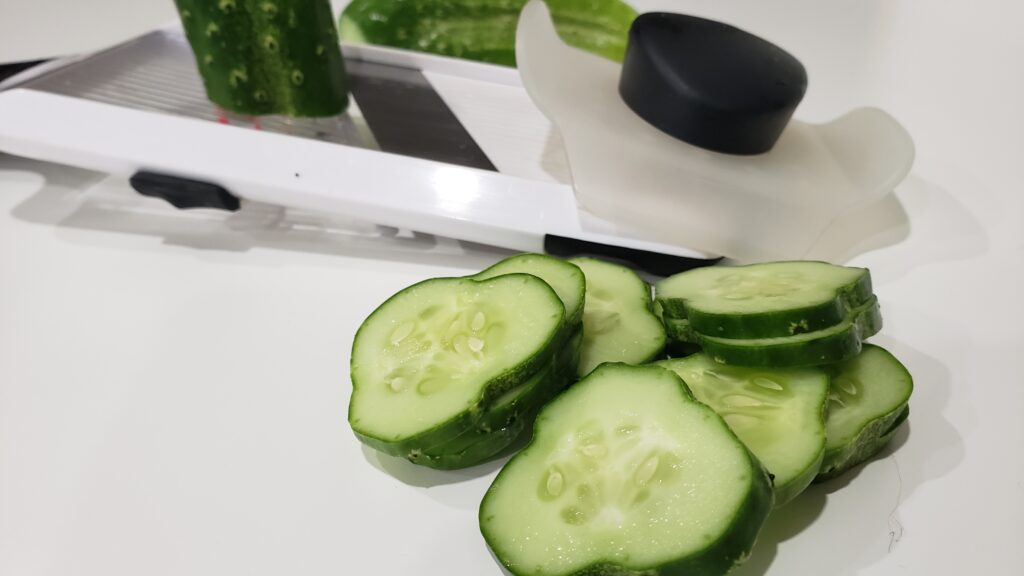
For the Dill
If you grow your own dill, cut the stalks above the soil. Using dill flowers is also a great choice. Wash thoroughly removing any dirt, aphids or eggs that may be on your dill. If you are using farmers market or store-bought dill, cut the roots off of the plant. Wash thoroughly, removing any dirt. Organic or spray free dill is best.
Get gardening advice straight to your inbox
3. Filling the Jars
In each of the mason jars, place 10 balls of allspice and a stalk of dill. You can adjust the amounts, to taste. If you love dill you can add multiple stalks of dill. Tightly pack the cucumbers in to the jar until just below the neck of the jar. You will want to pack them in as tight as possible, because once the brine is added the cucumbers will float and you want to avoid them floating as much as possible. Do not fill the jars above the bottom of the neck as you will need air in the jar when the hot brine is added.
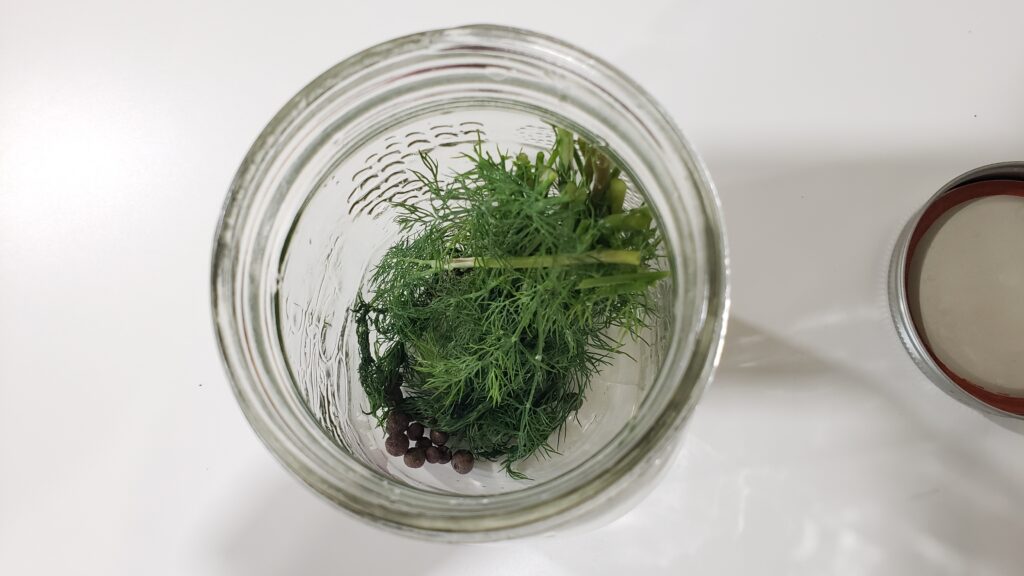
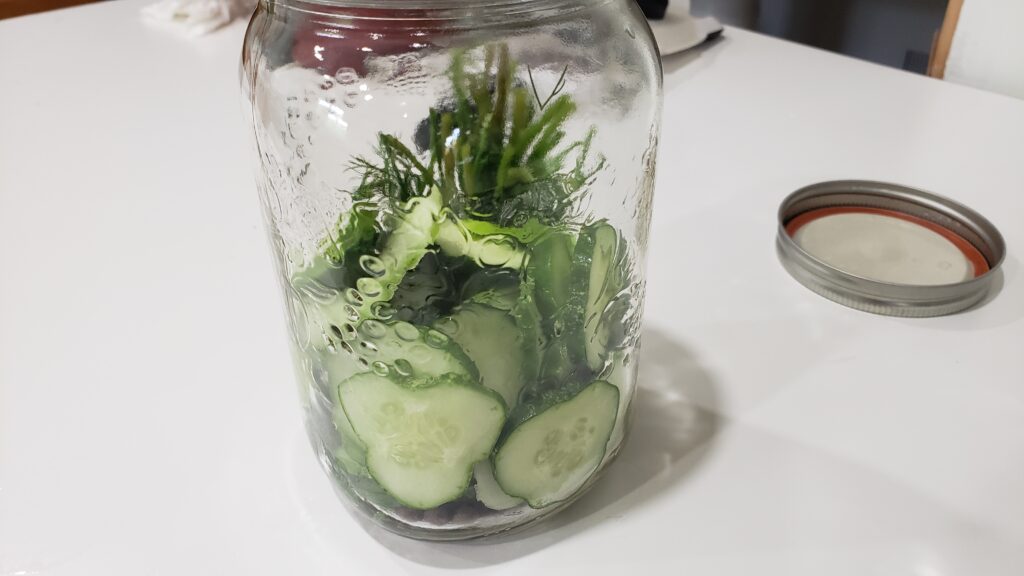
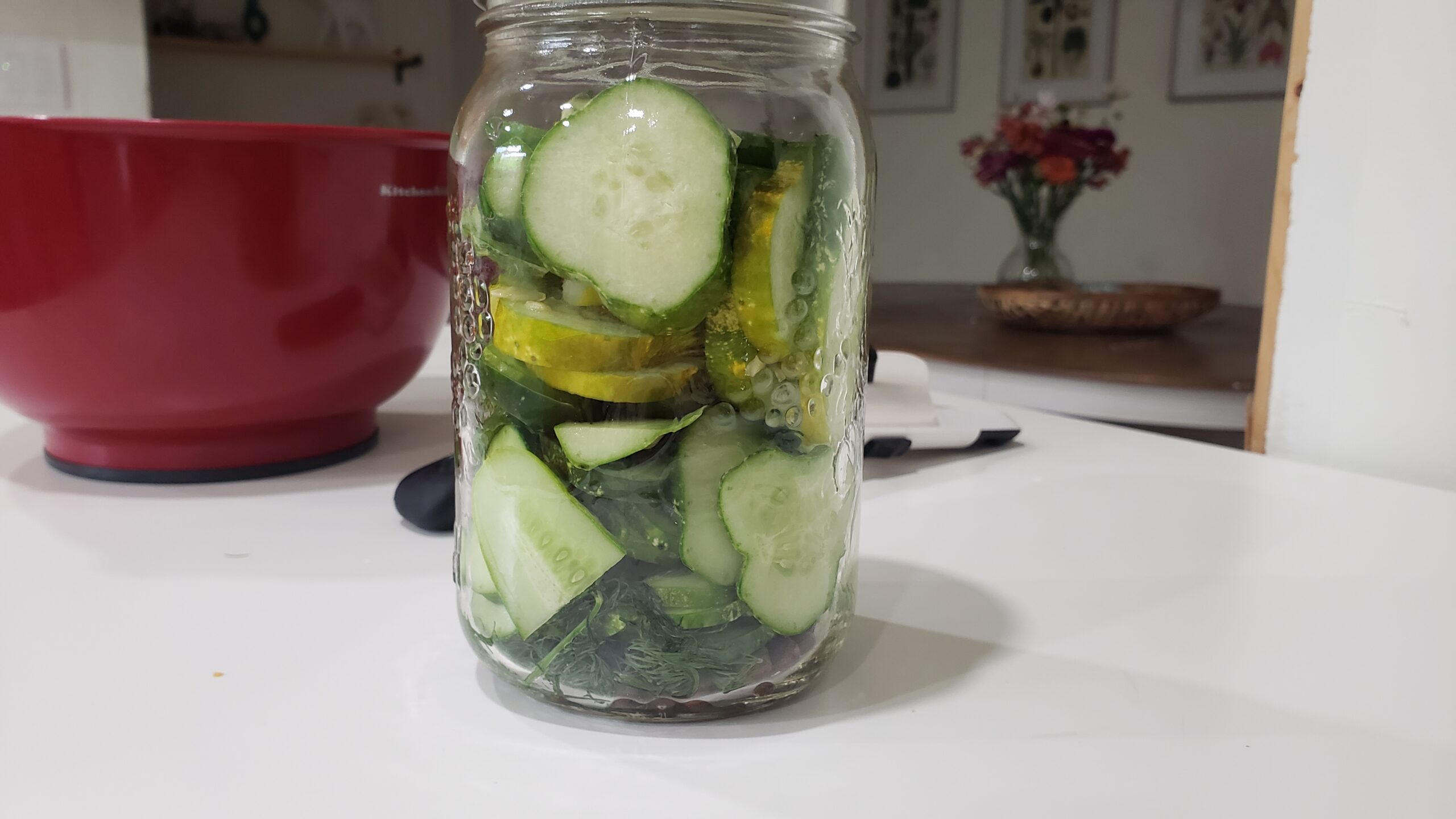
4. Making the Brine
Add the water, vinegar, salt and cream of tartar to a pot and bring to a boil. Boil for 5 minutes until salt is dissolved, stirring every so often. The water will take longer to boil with the salt in it and generally won’t come to a heavy boil. If the water is hot and the salt has dissolved, this is sufficient. Using filtered water is preferred, but if you do not have access to filtered water, tap will do.
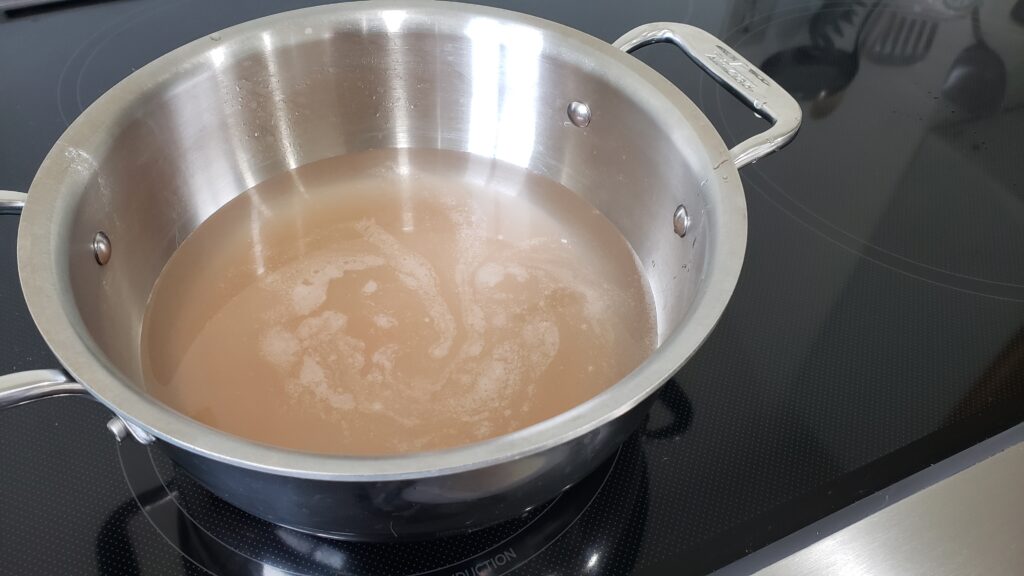
5. Completing the Pickles
Once the salt has dissolved, take off the stove and pour the hot brine in to the jars, to cover the cucumbers. To avoid burning or spilling, placing the jars in the sink and pouring the water in the jars in the sink is a good choice. Fill the jars just above the cucumbers and push down the cucumbers as best as possible to ensure they are all submerged. Fill all jars equally, rotating between each until they are all covered. Do not overfill the jars, you just want to cover the cucumbers and leave space at the top of the jars for air. Screw the lids on the jars and gently tap the side of the jar on the counter or a table to encourage bubbles to the surface. Label the jars with the date and leave on the counter to cool to room temperature
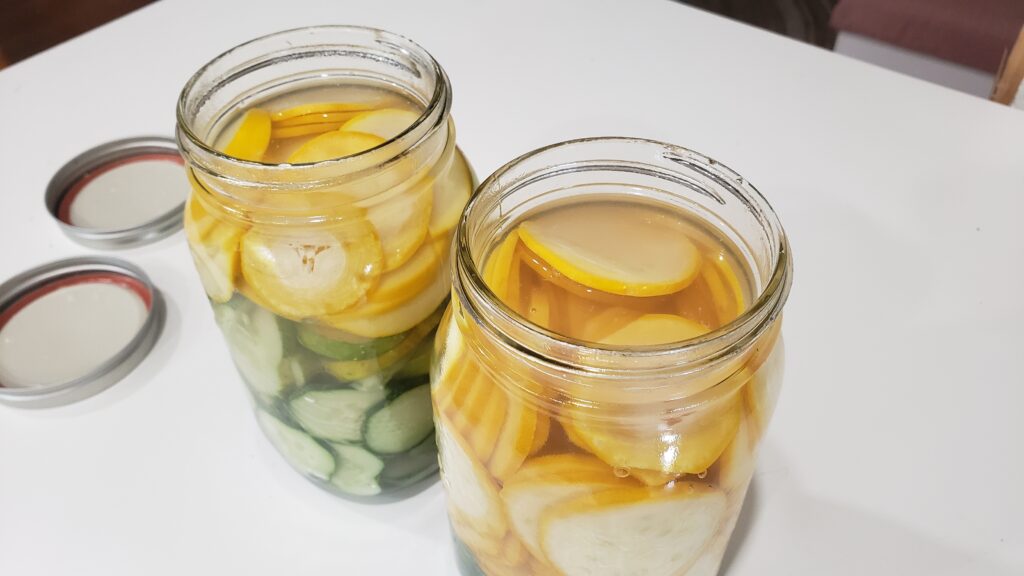
6. Finishing Steps
Once the jars have cooled to room temperature (which takes several hours), place the jars in the fridge. For best flavour results, wait 6 weeks. The cucumbers will start to taste mildly pickled after about 1 week if you are eager to dig in to them.
FAQ
- What happens if I run out of brine before all the jars are filled?
- Add some more filtered water to the jars until the cucumbers are covered. However, if you rotated between the jars, if there is any additional water required, each jar should only require a small amount
- What if my cucumbers float and are not completely submerged?
- If the cucumber isn’t completely submerged it isn’t the end of the world. That part of the cucumber just won’t pickle so when you open the jar you may want to compost the top, unsubmerged slices or cut off the tips that were out of the brine
- Do I need fresh dill or can I use dry?
- We do not recommend using dry dill and highly recommend using fresh dill
- The water hasn’t boiled but the salt is dissolved, can I use that brine?
- Yes, if the water is hot and the salt has dissolved, then you can use the brine
- Do the jars need to seal? What happens if they don’t?
- For quick pickling, the jars do not need to seal. However, due to the heat of the water, sometimes the jars do seal. It is not an issue if the jars do or do not seal.
You Might Also Like:
Quick Pickle Recipe
Makes approx. 4 – 1L jars of pickles
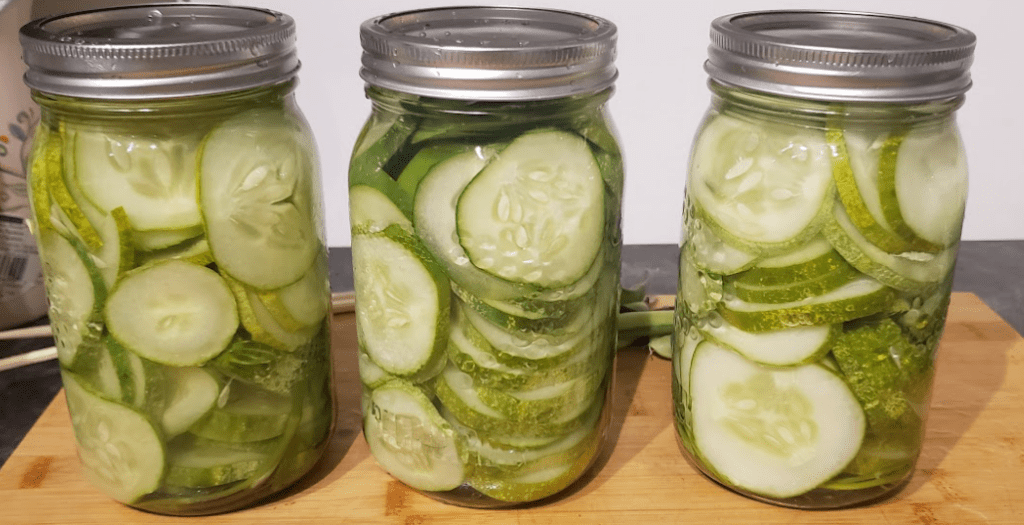
Ingredients
15-20 pickle sized cucumbers (organic if possible)
Fresh dill stalks
Whole allspice
4 ¼ cups of water
1 cup of vinegar
¼ cup of coarse salt
½ tsp cream of tartar
Directions
- Clean the jars in the dishwasher or by hand in hot water
- Clean cucumbers and cut in desired shape (whole, wedges or slices)* see notes below
- Once dry, place 10 balls of allspice and a stalk of dill in each jar (can adjust amounts to taste)
- Tightly pack the cucumbers in the jar until just below the neck of the jar (Fitting them in as tightly as possible to avoid the cucumbers floating once the brine is added)
- Add the water, vinegar, salt and cream of tartar to a pot and bring to a boil
- Boil for 5 minutes until salt is dissolved
- Take off the stove and pour the hot brine in to the jars, to cover the cucumbers
- Put the lid on the jars and gently tap the side of the jar on the counter or a table to encourage bubbles to the surface
- Label the jars with the date and leave on the counter to cool to room temperature
- Once cooled, place in fridge for 6 weeks, for best flavour results
Note 1: If you are using home grown cucumbers, cut off the flower end and the vine end. Additionally, clean off the sharp spikes on the cucumber skin with scissors, a clean sponge or your hands. The amount of sharp edges varies by variety
Note 2: If you are using a mandolin, use the thickest cutting option (our mandolin setting is 3)

